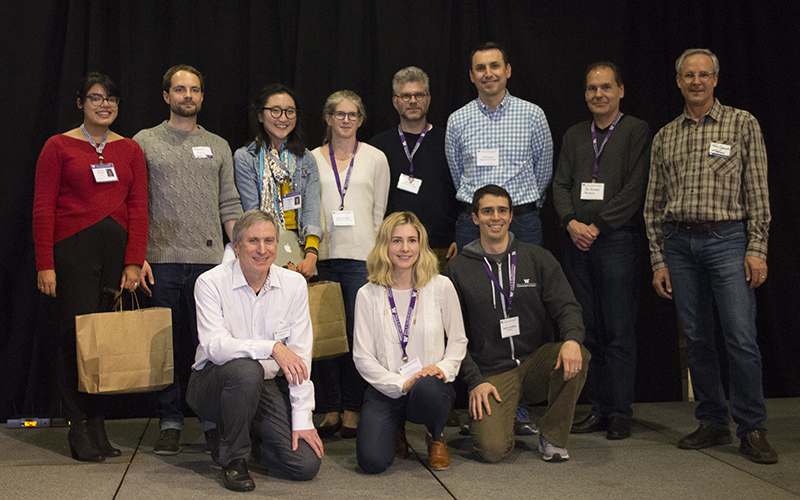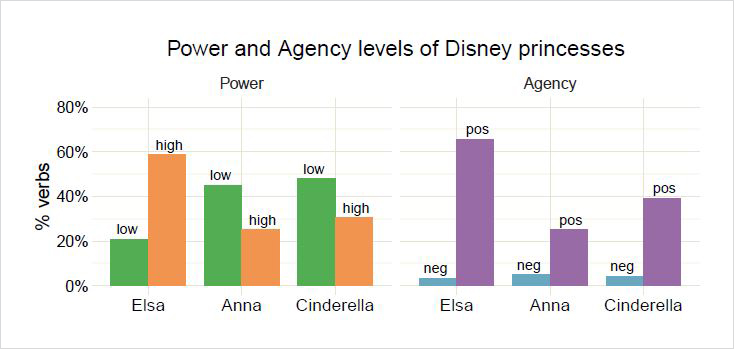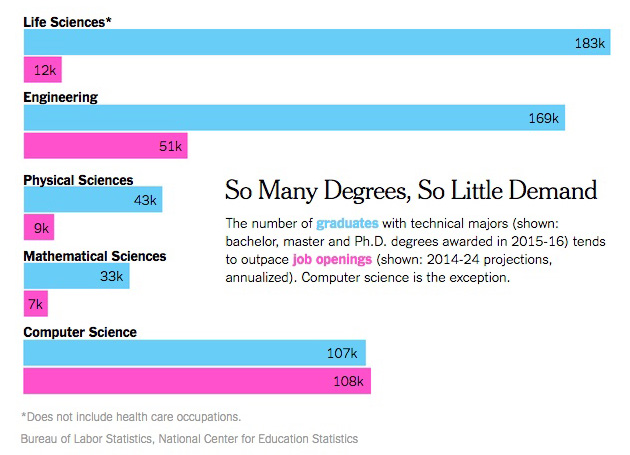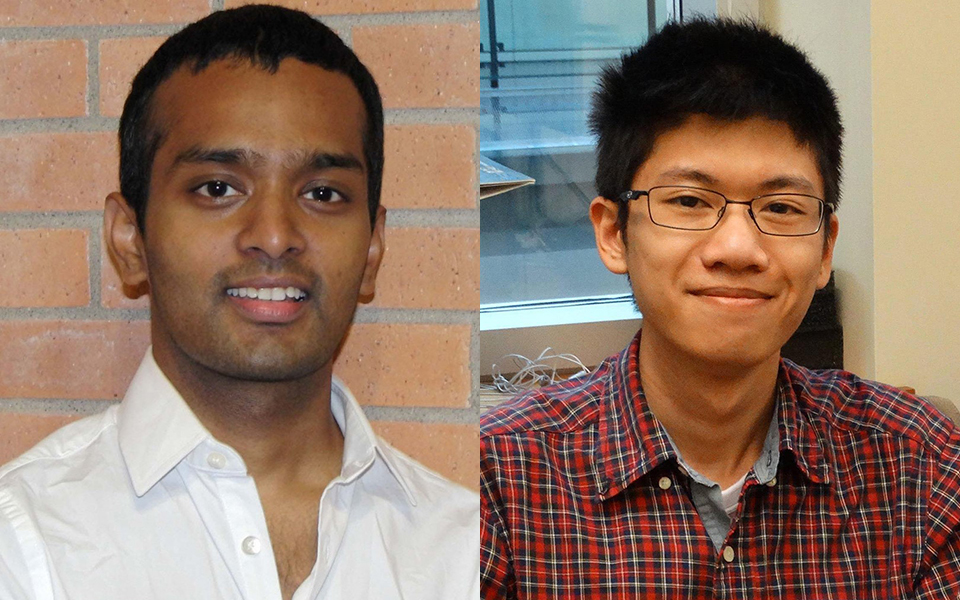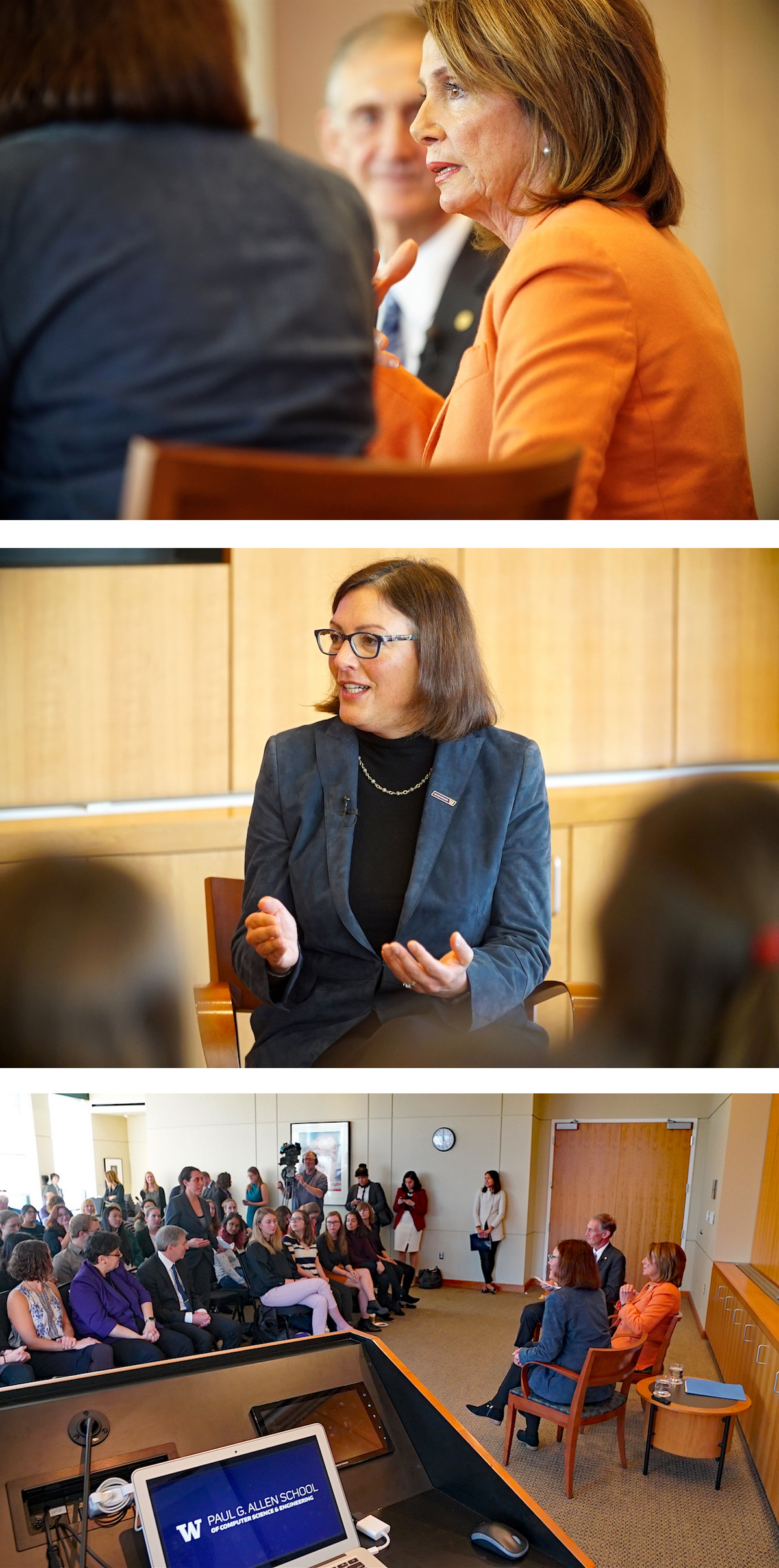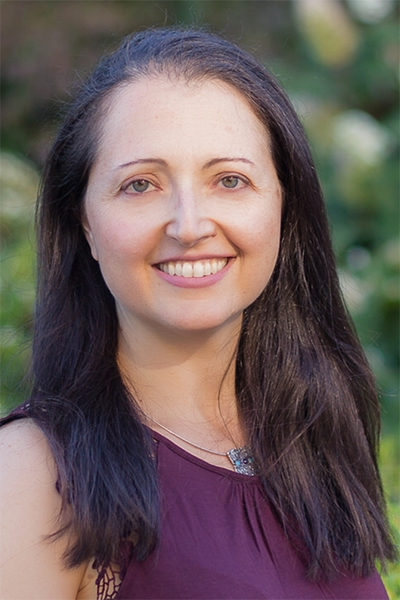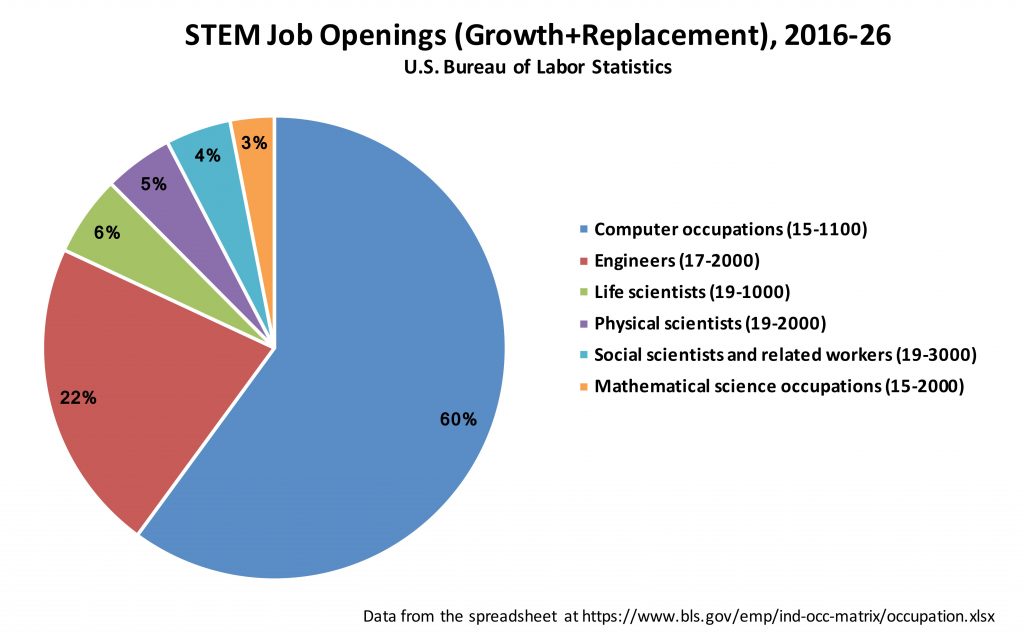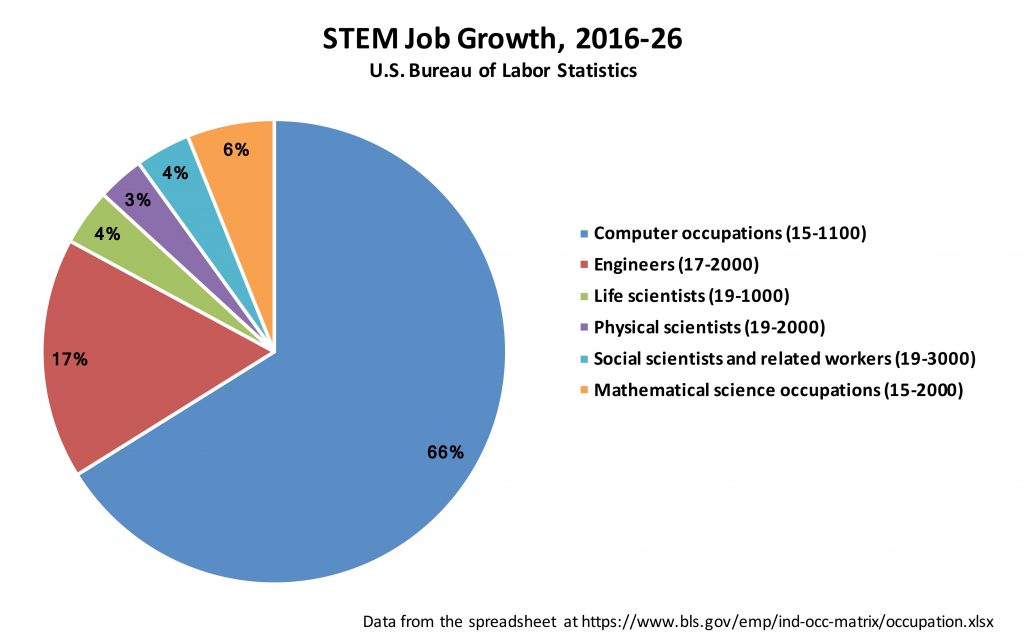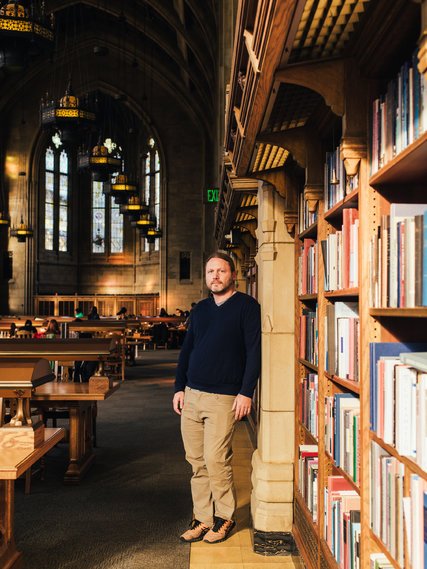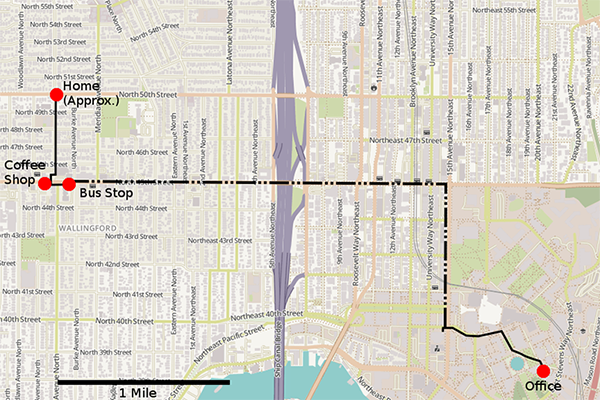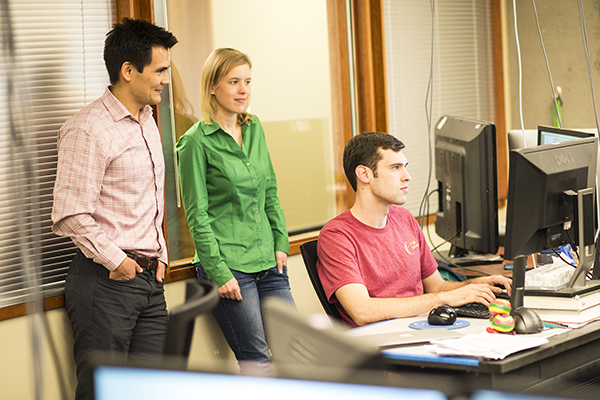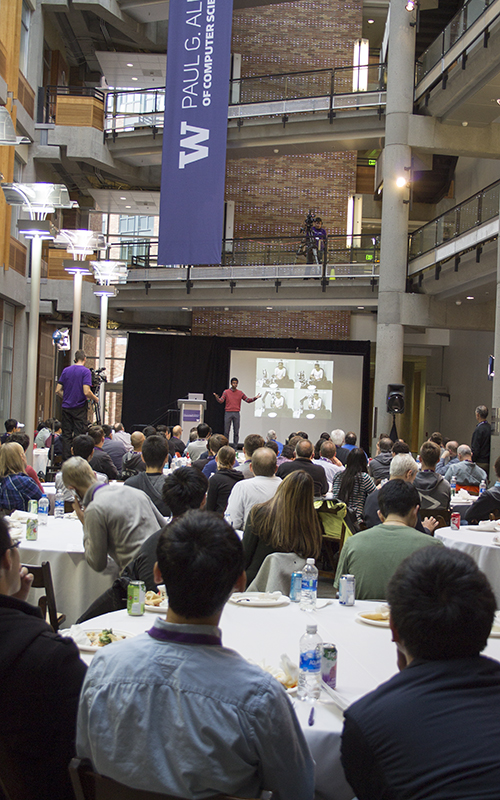
Allen School professor Sidd Srinivasa talks about his quest for a unified mathematical model for human-robot interaction
Each year, the Allen School welcomes industry partners, alumni and friends to our Affiliates Research Day to learn about the latest work by our faculty and students and to explore the future of computing-related research. Yesterday, more than 200 people participated in our 2017 Research Day, which featured technical talks on core and emerging areas of the field, a luncheon keynote by professor Sidd Srinivasa on human-robot interaction, and our evening open house and poster session.
During the open house, participants were invited to embark on self-guided tours of the Paul G. Allen Center, where more than 50 research teams presented posters and demos of their latest work. The evening afforded student researchers an opportunity to explain their projects to local industry leaders and technologists and, for some, to earn bragging rights (and some terrific prizes) as part of the Madrona Prize and People’s Choice Award competitions.
Madrona Venture Group sponsors the Madrona Prize — now in its 12th year — to recognize student researchers whose work represents exciting new directions and potential for commercialization.
“The newly named Paul G. Allen School has a long history of research that improves lives and delivers business and research growth to the region,” said Madrona Managing Director Tim Porter.
The winners were announced at the conclusion of the open house, along with the winners of the People’s Choice Award for visitors’ favorite posters of the evening. Read on for a complete run-down of the people and projects who were recognized as part of this year’s event.
2017 Madrona Prize
Winner
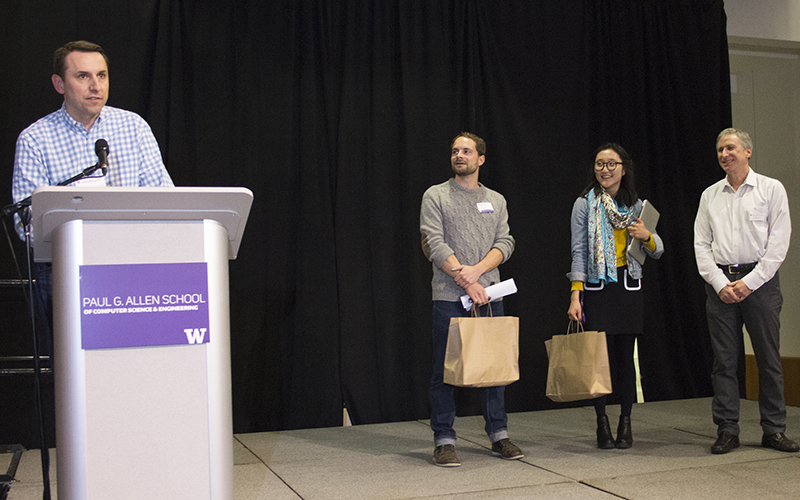
Madrona’s Tim Porter (left) congratulates Madrona Prize winners Manuel Nordhoff and Eunice Jun as Allen School Director Hank Levy looks on
The Madrona team selected two related projects in human computer interaction research developed under the guidance of Allen School professor Katharina Reinecke as joint grand-prize winners in this year’s competition:
LabintheWild: Large-scale Online Experimentation with Diverse Uncompensated Samples (postdoc Nigini Abilio Oliveira; Ph.D. student Eunice Jun; professor Katharina Reinecke) and Augury: Predicting visual appeal of website design (visiting scientist Manuel Nordhoff and professor Katharina Reinecke).
Runners up
A Unified Approach to Interpreting Model Predictions (Ph.D. student Scott Lundberg and professor Su-In Lee)
Real-time VR Video Processing with the Hardware-friendly Bilateral Solver (Ph.D. student Amrita Mazumdar; postdoc Armin Alaghi; professors Luis Ceze and Mark Oskin)
TVM: End-to-end IR Stack for Deep Learning Systems (Ph.D. students Tianqi Chen, Thierry Moreau, and Haichen Shen; Fudan University undergraduate and AWS intern Ziheng Jiang; professors Luis Ceze, Carlos Guestrin, and Arvind Krishnamurthy)
2017 People’s Choice Award
Winner
Learning Stylized Character Expressions from Humans (Ph.D. students Deepali Aneja, Bindita Chaudhuri; Zillow research scientist Alex Coburn; artist Gary Faigin; professors Linda Shapiro and Barbara Mones)
Runners up
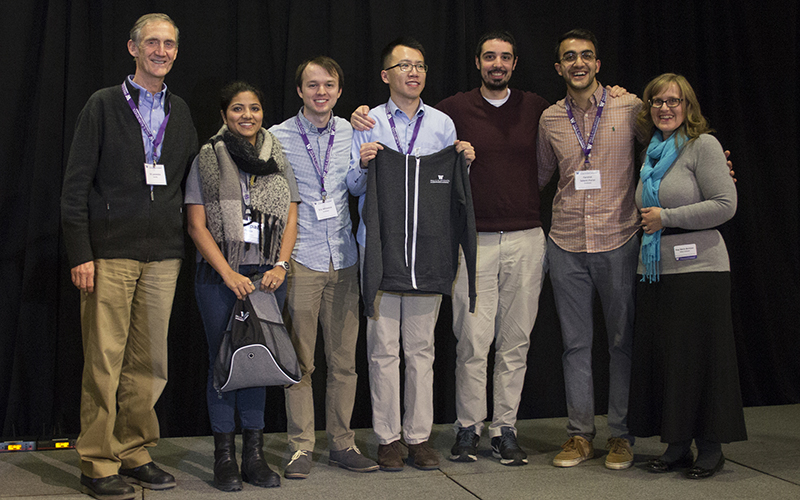
Winners of the People’s Choice Award onstage with Allen School professor Ed Lazowska (left) and External Relations Director Kay Beck-Benton (right)
IDCam: Precise Item Identification for AR-Enhanced Object Interactions (Ph.D. students Hanchuan Li, Eric Whitmire, and Alex Mariakakis; Qualcomm engineer Victor Chan; former postdoc and Disney Research scientist Alanson Sample; professor Shwetak Patel)
RoyalFlush: Non-invasive toilet water overflow detector (Electrical Engineering Ph.D. students Farshid Salemi Parizi and Josh Fromm; professor Shwetak Patel)
View the complete list of featured posters and demos here, and Madrona’s blog post here. Also check out GeekWire’s coverage of Srinivasa’s talk here, and the open house here.
Many thanks to our friends at Madrona to all of the members of our extended Allen School community who joined us in supporting student innovation!


